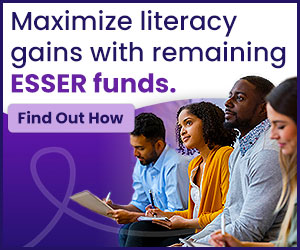
Key points:
As someone who coaches principals at Wichita Public Schools, I’ve seen how effective principals drive positive change across an entire school. They create collaborative and supportive learning cultures, attract high-quality teachers, and promote strong student outcomes. While it might seem like some people are simply cut out to be strong leaders, I believe with coaching more districts can develop administrators ready for the complexity of leading a building.
The value of a principal coach
Principal coaches can make a big difference, especially now. School leaders continue to face big unknowns including a lack of funding, a student mental health crisis, chronic absenteeism and a lack of student engagement. At the same time, the school environment that has been affecting teacher retention has taken its toll on administrators as well. Most school principals hold their position for only four years and veteran leaders are leaving the profession at higher rates.
The complex challenges and experience gaps school leaders sometimes encounter show the need to focus more on supporting principals. A principal coach’s role is to build the capacity of leaders to steer schools through change and ensure high-quality instruction. In my experience, providing effective principal support requires a mix of guiding leaders, developing learning communities, and active participation.
Guide, don’t prescribe
Mandates have a role in districts, but their impact is often limited. Instead, effective principal coaches understand the importance of showing principals how to encourage teacher ownership of change. I like to remind the principals I work with that embracing teacher-led change isn’t giving up power, it’s harnessing the unique strengths of teachers to recognize what will work and what won’t work in their classroom.
In my district, we recently used a “guide, don’t prescribe” mindset while adopting a new approach to learning. We were interested in introducing a new instructional approach in our district. The change would go beyond using new technology; it asked teachers–and principals–to create assignments, set up classrooms, and even assess knowledge in new ways where students could drive the pace of their learning. At the district level, we knew this approach would support student learning effectively, but we didn’t make it a mandate. Nor did we set a schedule for the teachers who opted to use the model.
The lack of standardization was hard for some building leaders initially. They worried that if the change wasn’t required, only a small group of teachers would use it. Additionally, there were concerns that students would have inconsistent experiences between teachers who used the model and those who didn’t.
Those fears turned out to be unfounded. Initially, a small group of instructional leaders and teachers were trained in the model. Some were able to rapidly incorporate the model into their classrooms and others needed more time. But by taking a more hands-off approach, interest grew organically. Just a few years in and interest in the model has grown so much that we offer 200 paid training spots each year for the model.
Commit to learning communities
We all learn better together because it creates psychological safety. When coaching principals I look for opportunities to build professional learning communities (PLCs) that connect leaders.
PLCs are particularly effective when principals are trying something new. Having a building leader take on a big change alone at their school or within a district can leave the person feeling isolated. Instead, I pair them with another person who can share the experience and collaborate closely. I’ve seen amazing results when educators can struggle, troubleshoot and find breakthroughs together. The relationship often extends beyond the PLC too, providing school leaders with strong professional connections that last a lifetime.
Play an active role
A great principal coach demonstrates that impactful leaders lead by doing. When we adopted the Modern Classrooms Project model, my fellow district leaders and I were among the first people to take the program’s training. As the initial training cohort, we could understand and think about the change not just from the perspective of introducing it to a building, but as people who would use the model every day. We wanted to be sure teachers in our district understood that we weren’t just asking them to make a change, we were doing it with them.
Because we took that approach, we can participate in collaborative problem-solving. When teachers are getting started or taking steps to advance their practice, we can be better coaches. Participating in the training gave us unique insight into the educator’s perspective so we’re able to provide more practical solutions.
Helping principals develop leadership skills can build thriving school environments. I’ve seen it firsthand in my district. By investing in support like principal coaches, districts can make that road easier and ensure there are more leaders who can help students and teachers grow.
- SEO Powered Content & PR Distribution. Get Amplified Today.
- PlatoData.Network Vertical Generative Ai. Empower Yourself. Access Here.
- PlatoAiStream. Web3 Intelligence. Knowledge Amplified. Access Here.
- PlatoESG. Carbon, CleanTech, Energy, Environment, Solar, Waste Management. Access Here.
- PlatoHealth. Biotech and Clinical Trials Intelligence. Access Here.
- Source: https://www.eschoolnews.com/educational-leadership/2024/03/25/key-qualities-of-a-principal-coach/
- :has
- :is
- :not
- :where
- $UP
- 11
- 200
- 28
- 6
- 9
- a
- Able
- About
- across
- active
- Additionally
- administrators
- adopted
- Adopting
- advance
- affecting
- All
- alone
- amazing
- among
- an
- and
- Another
- approach
- ARE
- AS
- asked
- asking
- assess
- assignments
- At
- attract
- author
- BE
- because
- been
- believe
- Better
- between
- Beyond
- Big
- breakthroughs
- build
- Building
- but
- by
- CAN
- Capacity
- challenges
- change
- classroom
- closely
- coach
- coaching
- Cohort
- collaborate
- collaborative
- Communities
- complex
- complexity
- Concerns
- Connect
- Connections
- continue
- contributors
- could
- create
- creates
- crisis
- cultures
- Cut
- day
- demonstrates
- description
- develop
- developing
- DID
- difference
- Director
- district
- doing
- Dont
- drive
- each
- easier
- ed
- educators
- Effective
- effectively
- embracing
- encounter
- encourage
- engagement
- ensure
- Entire
- Environment
- environments
- especially
- Even
- Every
- every day
- executive
- Executive Director
- experience
- Experiences
- extends
- Face
- fears
- feeling
- fellow
- few
- Find
- First
- Focus
- For
- four
- from
- funding
- gaps
- gave
- getting
- Giving
- Go
- great
- grew
- Group
- Grow
- grown
- guiding
- Hard
- Harnessing
- Have
- having
- Health
- help
- high-quality
- higher
- How
- How To
- http
- HTTPS
- i
- if
- Impact
- impactful
- importance
- in
- Including
- inconsistent
- incorporate
- initial
- initially
- insight
- instead
- instructional
- interest
- interested
- into
- introducing
- investing
- isolated
- IT
- ITS
- Johnson
- jpeg
- just
- Kansas
- Key
- knew
- knowledge
- Lack
- Last
- lead
- leader
- leaders
- Leadership
- leading
- LEARN
- learning
- Leave
- Level
- lifetime
- like
- Limited
- Look
- make
- mandate
- Media
- mental
- Mental health
- might
- Mindset
- mix
- model
- Modern
- more
- most
- much
- my
- Need
- needed
- New
- nor
- note
- now
- of
- offer
- often
- on
- only
- opportunities
- or
- organically
- Others
- our
- out
- ownership
- Pace
- paid
- pair
- participate
- participating
- participation
- particularly
- People
- person
- perspective
- plato
- Plato Data Intelligence
- PlatoData
- PLC
- points
- position
- positive
- Posts
- power
- Practical
- practice
- Principal
- principals
- problem-solving
- profession
- professional
- project
- provide
- providing
- psychological
- public
- qualities
- rapidly
- ready
- recently
- recognize
- relationship
- required
- requires
- Results
- retention
- road
- Role
- Safety
- same
- School
- Schools
- secondary
- seem
- seen
- set
- Share
- show
- showing
- simply
- skills
- small
- So
- Solutions
- some
- Someone
- something
- sometimes
- spots
- standardization
- started
- steer
- Steps
- strengths
- strong
- Struggle
- Student
- Students
- support
- Supporting
- supportive
- sure
- Take
- taken
- taking
- teacher
- teachers
- Technology
- that
- The
- their
- Them
- There.
- they
- Think
- this
- those
- thriving
- Through
- time
- to
- together
- too
- took
- trained
- Training
- trying
- Turned
- understand
- understood
- unique
- us
- USD
- use
- used
- using
- value
- veteran
- wanted
- was
- ways
- we
- WELL
- were
- What
- when
- while
- WHO
- will
- with
- within
- Work
- worried
- would
- year
- years
- zephyrnet












